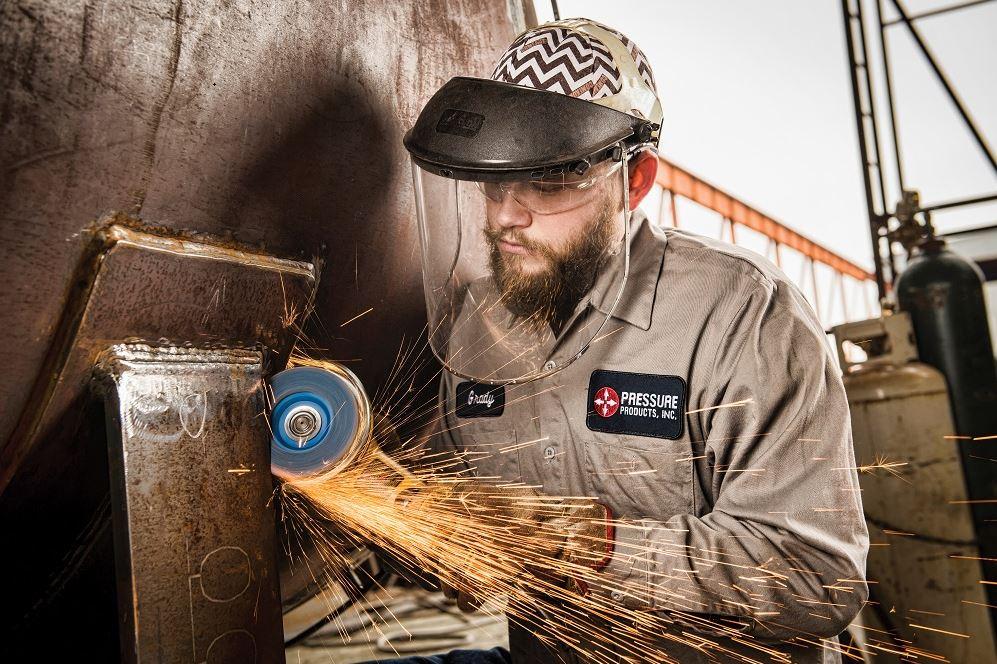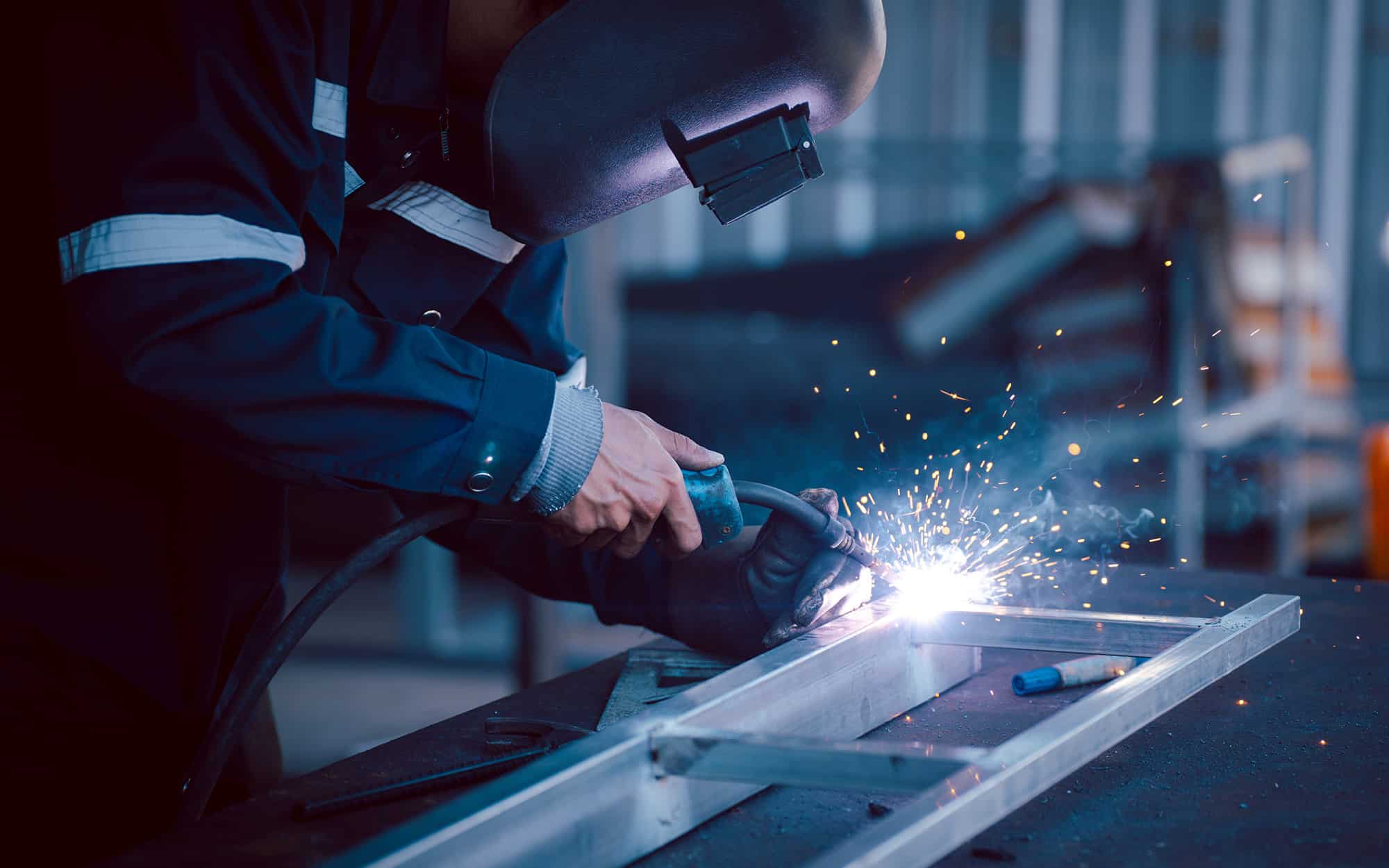Typical Welding Fixing Issues and Exactly How to Address Them Properly
Welding fixings frequently run into a variety of concerns that can threaten the stability of the end product. Common issues consist of inadequate infiltration, porosity, and imbalance, to name a few. Each issue offers unique difficulties that need particular approaches for resolution. Recognizing these concerns is necessary for welders intending to enhance their abilities and outcomes. This conversation will certainly explore these typical welding repair concerns and reliable methods to address them.
Inadequate Infiltration
Insufficient infiltration takes place when the weld steel fails to completely fuse with the base product, causing weak joints and prospective architectural failures. This problem usually originates from not enough heat input, inaccurate electrode angle, or improper welding rate. Welders might run into insufficient penetration because of a mistake of the needed criteria for a specific product density or type. In addition, contamination on the base product's surface area can hinder effective bonding, aggravating the trouble. To attend to inadequate penetration, welders should ensure suitable settings on their tools and preserve a clean work surface. Regular assessment of welds is advised to identify any kind of shortages early, allowing for timely corrections and the prevention of jeopardized structural integrity in bonded assemblies.
Porosity
Porosity is a common flaw in bonded joints that materializes as little gas bubbles entraped within the weld steel. This defect can compromise the integrity of the weld, causing reduced toughness and prospective failing under anxiety. Fabrication. Porosity normally emerges from contamination, wetness, or incorrect welding methods, which allow gases to escape right into the liquified weld pool. To resolve porosity, welders should ensure appropriate surface preparation, keep a tidy working environment, and utilize suitable welding parameters. Additionally, picking the right filler product and protecting gas can alleviate gas entrapment. Routine inspection and testing of welds can help identify porosity early, guaranteeing prompt rehabilitative activities are taken, consequently maintaining the quality and reliability of the welded structure
Misalignment
Misalignment in welding can occur from numerous factors, including inappropriate arrangement and thermal expansion. Comprehending the root causes is essential for reliable resolution. Numerous improvement methods are readily available to realign elements and assure structural honesty.
Reasons for Misalignment
Welding imbalance typically comes from a selection of underlying concerns that can jeopardize structural integrity. One key reason is improper fit-up of parts prior to welding, which can result in spaces and uneven surface areas. Variants in thermal growth throughout the welding procedure can likewise result in distortion, especially if the products being signed up with have various coefficients of growth. In addition, insufficient fixturing and securing might fail to hold elements firmly in place, leading to motion during welding. Badly conserved tools, consisting of welding makers and devices, may present inconsistencies in the weld grain, more adding to imbalance. Lastly, operator mistake, originating from not enough training or experience, can likewise play a substantial duty in producing misaligned welds.
Modification Strategies Offered
Dealing with imbalance effectively needs a combination of restorative strategies tailored to the certain issues handy. One common technique is making use of components or jigs to hold elements in the correct placement throughout welding, making certain constant alignment. In addition, pre-heating the materials can help in reducing distortion and enhance fit-up. For considerable misalignment, mechanical adjustment techniques, such as utilizing hydraulic jacks or clamps, can be employed to correct the placement prior to welding. Post-weld warmth therapy might likewise be required to alleviate stresses brought on by imbalance. Ultimately, careful assessment and adjustment during the setup stage can prevent misalignment issues from coming to be significant troubles, promoting a smoother welding process and enhancing general architectural honesty.
Distortion
Distortion is a common obstacle in welding that can occur from different aspects, including unequal home heating and air conditioning. Understanding the reasons of distortion is crucial for executing reliable avoidance methods. Addressing this concern not just improves structural honesty however also improves the general top quality of the weld.
Reasons for Distortion
When based on the intense warmth of welding, materials usually undertake modifications that can bring about distortion. This sensation mainly develops from thermal expansion and contraction throughout the welding procedure. As the weld area warms up, the material expands; upon air conditioning, it gets, which can produce internal tensions. Furthermore, unequal home heating across a workpiece can exacerbate these stresses, resulting in bending or flexing. The sort of product likewise plays a significant role; steels with varying thermal conductivity and coefficients of expansion might respond in different ways, leading to unpredictable distortions. Additionally, inadequate joint style and poor fixturing can add to misalignment throughout welding, boosting the possibility of distortion. Comprehending these reasons is essential for effective welding fixing and avoidance techniques.
Prevention Techniques
Reliable prevention techniques for distortion throughout welding concentrate on managing warmth input and ensuring proper joint layout. Maintaining a regular warm input helps to minimize thermal growth and tightening, which can result in distortion. Making use of strategies such as pre-heating the work surface can likewise decrease the temperature gradient, promoting consistent heating. Furthermore, choosing proper joint designs, such as T-joints or lap joints, can improve stability and lower stress concentrations. Implementing correct fixturing to secure the workpieces Your Domain Name in position further aids in preserving placement during the welding process. Staggered welding series can disperse warmth extra evenly, stopping local distortion. By applying these strategies, welders can greatly decrease the probability of distortion and improve the total top quality of their welds.
Fracturing
Breaking is a typical problem encountered in welding repair services, usually resulting from various variables such as inappropriate cooling rates, material choice, or inadequate joint prep work. The occurrence of splits can greatly endanger the stability of the weld, resulting in prospective failures throughout procedure. To address this issue, welders need to initially assess the origin, making sure that products are compatible and suitably picked for the particular application. Additionally, regulating the air conditioning price during the welding procedure is important; quick cooling can cause anxiety and cause cracking. Correct joint style and preparation likewise add to minimizing the danger. Applying these techniques can enhance weld quality and toughness, eventually reducing the likelihood of fracturing in ended up weldments.

Insufficient Combination
A considerable problem in welding fixings is incomplete fusion, which happens when the weld metal does not appropriately bond with the base material or previous weld passes - Fabrication. This flaw can bring about weaknesses in the joint, potentially jeopardizing the integrity of the bonded structure. Variables contributing to incomplete blend include not enough heat input, inappropriate welding strategy, and contamination of the surfaces being signed up with. To address this problem effectively, welders need to ensure correct pre-weld cleaning and surface preparation, in addition to change their welding specifications to accomplish ample penetration and combination. Routine examination during the welding process can also help recognize incomplete blend early, enabling prompt restorative steps to enhance the general high quality of the weld
Overheating
While welding repairs can enhance architectural stability, overheating presents a considerable challenge that can bring about material degradation. Too much warmth throughout welding can change the mechanical residential or commercial properties of steels, leading to decreased stamina, increased brittleness, and warping. This phenomenon is specifically critical in high-stress applications where structural dependability is critical. Identifying getting too hot can involve visual inspections for staining or distortion, as well as checking temperature level during the welding process. To mitigate the dangers associated with overheating, welders need to use suitable methods, such as regulating heat input, changing travel speed, and utilizing ideal filler products. Furthermore, applying pre- and post-weld heat therapies can help bring back product properties and enhance the overall high quality of the repair service, making certain long-lasting performance and security.
Frequently Asked Concerns
What Are the Common Indicators of a Welding Flaw?

Just How Can I Test My Welds for Top quality?
To evaluate welds for high quality, one can utilize aesthetic inspections, ultrasonic testing, and radiographic approaches. Each method ensures architectural honesty, recognizes issues, and validates adherence to specified criteria, ultimately enhancing the integrity of the bonded joints.
What Safety and security Preventative Measures Should I Take While Welding?
When welding, one need to focus on security by wearing ideal individual safety tools, making certain appropriate ventilation, safeguarding combustible materials away, maintaining a clean work space, and being mindful Learn More of environments to stop crashes and injuries.
Can I Repair a Weld Without Redesigning the Entire Joint?
Fixing a weld without renovating the whole joint is feasible, relying on the damages (Welding). Methods such as grinding, adding filler product, or using a welding procedure can efficiently address certain flaws while maintaining the bordering structure
What Tools Are Essential for Reliable Welding Repair Works?
Necessary devices for effective welding repairs consist of a welding equipment, cord brush, grinder, safety gear, clamps, and filler materials. Each device plays have a peek at this site an important role in making sure top quality and security throughout the repair service procedure. Porosity generally emerges from contamination, dampness, or improper welding techniques, which enable gases to get away right into the molten weld pool. Badly kept tools, including welding makers and devices, might introduce variances in the weld grain, additional contributing to misalignment. When subjected to the intense warmth of welding, materials frequently go through modifications that can lead to distortion. Cracking is an usual concern come across in welding repair work, often resulting from different variables such as incorrect air conditioning rates, product selection, or insufficient joint prep work. A substantial concern in welding repairs is incomplete fusion, which happens when the weld steel does not appropriately bond with the base material or previous weld passes.